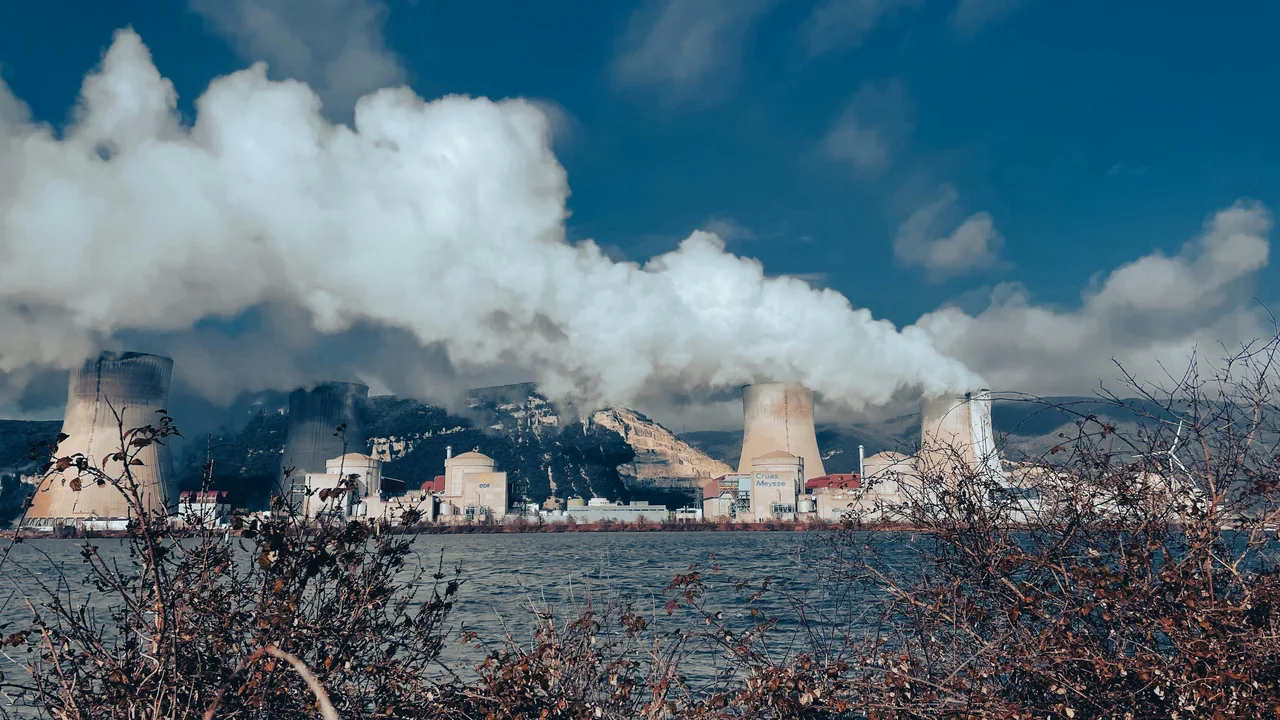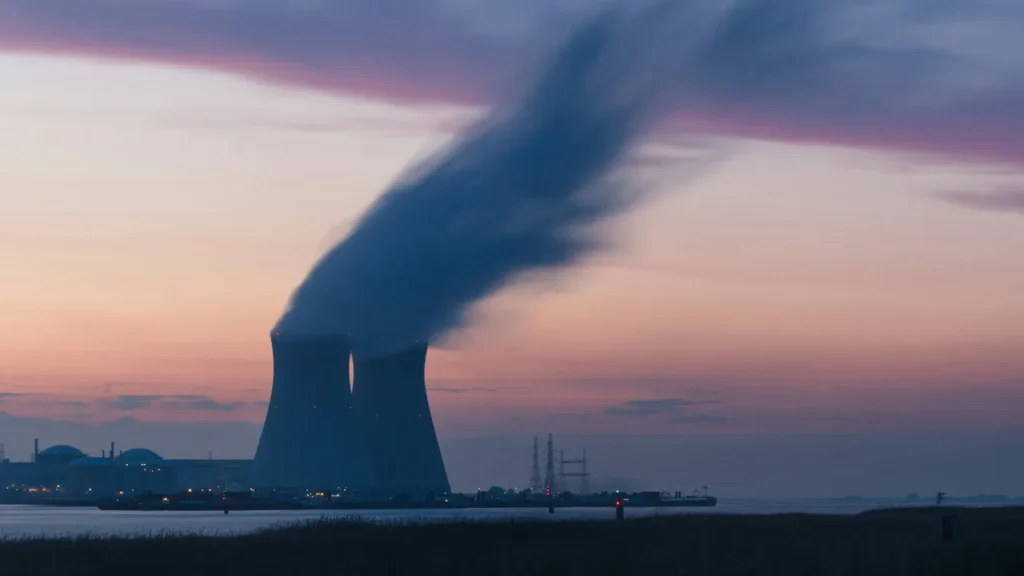Nuclear energy remains one of the most powerful and efficient sources of electricity in the modern world. However, as global energy demand continues to rise, ensuring that nuclear plant construction meets the highest safety and engineering standards has become critical. Modern nuclear facilities are no longer just about generating power—they represent a commitment to safety, innovation, and sustainable development.
Introduction to Nuclear Plant Construction
The 21st century has seen a resurgence in interest toward nuclear power as countries seek low-carbon solutions to their growing energy needs. Nuclear plant construction has evolved dramatically, integrating digital modeling, prefabrication, and advanced materials to enhance both efficiency and safety. In today’s context, safety isn’t a feature—it’s the foundation upon which every nuclear structure is built.
Modern reactors are designed to withstand natural disasters, minimize radiation risks, and operate efficiently for decades. Engineers and regulators collaborate from the early planning stage to ensure that every safety aspect is fully integrated into the project design, from the containment structure to emergency response systems.
Historical Context and Lessons from the Past
To understand how far the industry has come, it’s essential to look at the lessons of the past. Major incidents like Chernobyl, Three Mile Island, and Fukushima exposed weaknesses in early designs and emergency protocols. These tragedies reshaped global policy and highlighted the importance of advanced safety measures and fail-safe systems in nuclear operations.
After these incidents, international standards were rewritten, introducing multi-layered defense systems, redundant cooling circuits, and improved operator training. The evolution from Generation I reactors to today’s Generation IV and Small Modular Reactors (SMRs) demonstrates how technology and regulation now work hand in hand to prevent such failures from ever repeating.
Key Safety Measures in Modern Nuclear Construction
Modern nuclear plant construction incorporates several overlapping safety systems to protect workers, the public, and the environment. These systems include structural, thermal, electrical, and human-factor safeguards that ensure the plant can continue to operate safely even under extreme conditions.
Structural Reinforcement and Seismic Design
Seismic resistance is among the top priorities for nuclear engineers. Facilities are built using high-strength reinforced concrete and steel frameworks capable of absorbing and dissipating seismic energy. Advanced simulation tools model how structures behave under various stress loads, ensuring that each foundation and wall can withstand severe earthquakes.
- Base-isolation systems reduce ground vibration impact.
- Redundant supports provide backup stability if one system fails.
- Continuous monitoring with sensors detects structural strain in real time.
Fire and Radiation Containment Systems
A key aspect of containment design is ensuring that any potential release of radioactive material is fully confined within secure barriers. Modern plants use a dual containment dome—an inner steel shell and an outer reinforced concrete shell—creating multiple layers of defense against radiation escape.
Additionally, advanced fire-suppression systems, inert-gas flooding, and high-pressure filtration units maintain internal stability even during critical events. Each facility undergoes stress-testing, simulating fire, flood, and power-loss scenarios to validate its resistance capabilities.
Cooling and Backup Power Systems
Efficient cooling is essential to prevent reactor core overheating. Modern reactors feature both active and passive cooling systems—where passive systems rely on gravity, natural circulation, and condensation rather than mechanical pumps. Backup power supplies, such as diesel generators and independent battery packs, ensure that cooling continues uninterrupted even during grid failure.
Lessons learned from Fukushima have prompted the integration of elevated water reservoirs, underground power cables, and mobile emergency generators. AI-based sensors now monitor coolant temperature and flow rate 24/7, automatically adjusting valves to maintain stability.
Modern Construction Standards for Nuclear Facilities

Beyond physical safety systems, international standards play a vital role in regulating how nuclear plant construction is executed. Every phase—from site selection to commissioning—must comply with global codes and independent inspections.
International Codes and Regulatory Frameworks
Organizations like the International Atomic Energy Agency (IAEA), the Nuclear Regulatory Commission (NRC), and the American Society of Mechanical Engineers (ASME) define strict construction and safety codes. These frameworks specify the design, materials, and maintenance routines required for long-term operational safety.
| Regulatory Body | Main Focus |
|---|---|
| IAEA | Global safety guidelines and best practices |
| NRC (U.S.) | Licensing, inspection, and emergency response |
| ASME | Design and material strength standards |
| ISO 19443 | Quality-management systems for nuclear suppliers |
Through consistent audits and data transparency, these standards ensure that every nuclear site meets or exceeds the highest expectations for resilience and security.
Use of Advanced Materials and Modular Construction
One of the biggest advancements in recent years is the adoption of modular construction. Prefabricated sections are assembled off-site in controlled environments, allowing faster assembly and reducing human error. This approach shortens the project timeline by 30–50% while maintaining superior quality control.
Advanced alloys and high-density concrete are now used to resist radiation, corrosion, and extreme temperatures. The modular design also simplifies maintenance and future upgrades, minimizing downtime and exposure risks for technicians.
Quality Assurance and Continuous Monitoring
Quality assurance (QA) and quality control (QC) are critical pillars in nuclear plant construction. Every welding joint, concrete pour, and cable installation undergoes multiple layers of inspection, ensuring compliance with engineering blueprints and safety codes. Advanced monitoring technologies such as laser scanning, digital twins, and 3D mapping now allow engineers to verify every stage of construction in real time.
Continuous monitoring systems also provide early warning alerts for potential structural weaknesses, corrosion, or pressure anomalies. These automated checks drastically reduce human error and improve long-term reliability. The integration of Building Information Modeling (BIM) enables coordination between engineers, architects, and regulators—creating a single source of truth for all design and maintenance documentation.
Innovations in Containment Design
The evolution of containment design reflects one of the greatest advancements in nuclear engineering. Unlike traditional domes, modern reactors employ passive safety designs—systems that rely on natural forces such as gravity and convection rather than human intervention. This ensures safety even in cases of total power loss or operator failure.
- Double containment structures that isolate radiation and heat effectively.
- Passive cooling systems capable of maintaining safe core temperatures for 72 hours without power.
- Filtered venting systems that release pressure without emitting harmful particles.
Examples like the AP1000 reactor by Westinghouse and the European EPR showcase this new generation of safe, efficient, and cost-effective nuclear plants. By integrating advanced sensors and self-regulating control systems, modern facilities minimize the likelihood of human error while enhancing operational flexibility.
Integrating Sustainability in Nuclear Construction
While nuclear power is often debated for its waste management challenges, its role in achieving carbon neutrality is undeniable. During nuclear plant construction, sustainability efforts now focus on reducing carbon footprints through energy-efficient processes, material recycling, and optimized logistics.
For example:
- Recycling of steel and concrete to reduce raw material extraction.
- Closed-loop cooling systems that minimize water consumption.
- Utilization of renewable energy (solar/wind) for on-site construction power.
Waste management has also improved significantly. Modern nuclear facilities store and reprocess spent fuel using advanced containment materials, ensuring zero leakage and long-term environmental safety. The goal is to align nuclear power with sustainable construction ethics—proving that high-energy output can coexist with ecological responsibility.
Training, Operations, and Human Factors
No matter how advanced the technology, the human element remains a decisive factor in nuclear safety. Comprehensive training programs now simulate emergency scenarios using virtual reality (VR) and augmented reality (AR) platforms, preparing operators for any situation. These programs teach staff to respond swiftly to system alerts, handle maintenance procedures, and coordinate evacuation protocols if necessary.
Human Reliability Analysis (HRA) is now part of every nuclear plant construction plan. It identifies potential decision-making failures and incorporates design elements that guide human behavior toward safer outcomes. Improved control room ergonomics, intuitive interface layouts, and color-coded alert systems reduce confusion and stress during high-pressure situations.
Global Outlook and the Future of Nuclear Construction
The global perspective on nuclear power is shifting. Countries across Asia, the Middle East, and Europe are accelerating investments in next-generation nuclear plants, particularly Small Modular Reactors (SMRs). These compact systems can be built off-site, transported easily, and assembled quickly—making them ideal for developing regions seeking stable, clean energy sources.
Technological convergence is also shaping the future. Artificial intelligence and robotics are being deployed for tasks like component inspection, radiation measurement, and predictive maintenance. These tools help extend the operational lifespan of reactors while reducing exposure risks to human workers.
Looking ahead, nuclear plant construction will likely adopt more hybrid energy models that integrate nuclear with renewables. Smart grids and decentralized power systems will ensure a balanced, resilient energy ecosystem capable of meeting growing global demand without compromising safety or sustainability.
Conclusion
In the modern era, the phrase “safe nuclear energy” is no longer an oxymoron—it’s a reality built through precision, discipline, and continuous innovation. The evolution of nuclear plant construction showcases how far the industry has come, from the tragedies of the past to the triumphs of engineering today. With rigorous safety measures, advanced containment design, and a focus on sustainability, nuclear power stands ready to support a cleaner, more resilient global energy future.
Ultimately, the combination of smart construction, global regulation, and human expertise ensures that nuclear power remains a cornerstone of modern civilization—powering progress safely and responsibly for generations to come.



